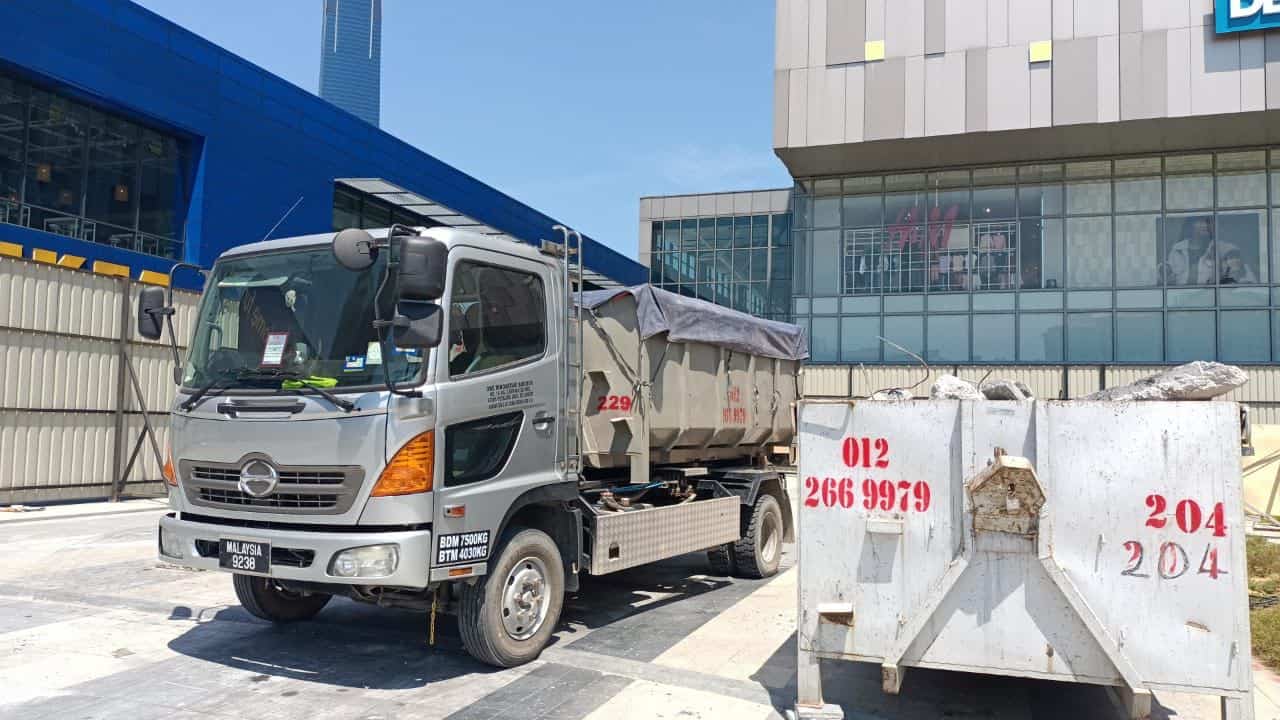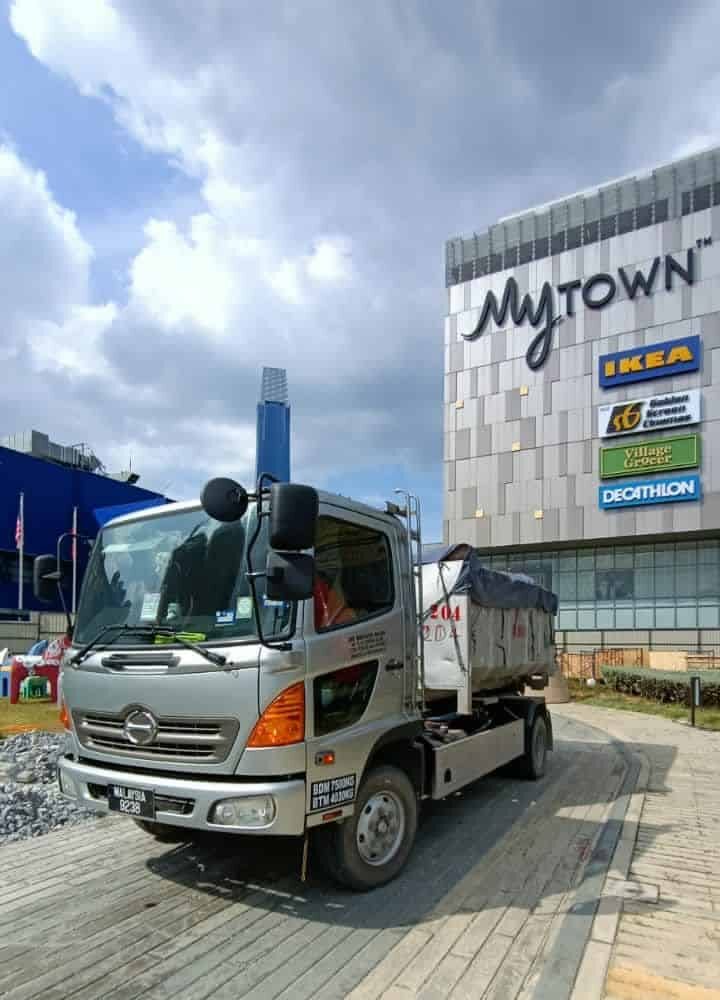RORO BIN RENTAL
Find The Right Size For Your Project

Small Roro Bin
Dimensions: 12′ (L) X 6′ (W) X 2.5′ (H)
Best Use: Heavy construction and demolition waste like concrete and soil.

Large Roro Bin
Dimensions: 12′ (L) X 6′ (W) X 4′ (H)
Best Use: Light-weight construction, industrial, commercial waste, furniture, household bulky waste, trees and etc.

Domestic Roro Bin
Dimensions: 12′ (L) X 6′ (W) X 4′ (H) with roof
Best Use: Domestic food waste (Organic waste).

Extra Giant Roro Bin
Dimensions: 16′ (L) X 8′ (W) X 6′ (H)
Best Use: Light-weight construction, industrial, commercial waste, furniture, household bulky waste, trees and etc.

Giant Roro Bin
Dimensions: 14′ (L) X 7′ (W) X 5.5′ (H)
Best Use: Light-weight construction, industrial, commercial waste, furniture, household bulky waste, trees and etc.
WHAT MAKES US DIFFERENT ?

Value Price

Express Service

Licensed Under Local Authorities

Quick Scheduling
TESTIMONIALS
OUR CLIENTS







PROJECT REFERENCE









Construction Bin
Introduction to Construction Bins
Ever wondered how construction sites keep their spaces clear of waste and debris? Enter the construction bin—a must-have for efficient, safe, and organized projects. Whether it’s a home renovation or a large-scale building project, construction bins make waste management seamless and straightforward, saving time, money, and hassle. In this article, we’ll break down everything you need to know about construction bins, from types and sizes to benefits and rental tips.
What is a Construction Bin?
A construction bin is a large, durable container used for collecting and transporting construction and demolition debris. Typically made from sturdy materials like steel, these bins can handle everything from wood and concrete to metals and other discarded materials. They’re available in various sizes, ensuring that every project—big or small—has a suitable bin for efficient waste management.
Types of Construction Bins
To suit different project needs, there are several types of construction bins. Let’s look at the most popular ones:
Roll-off Bins
These are versatile, open-topped bins with wheels, making them easy to transport to and from construction sites. Roll-off bins are ideal for projects generating large amounts of waste, like home renovations or demolitions.
Hook Lift Bins
Hook lift bins feature a hook system that allows trucks to quickly lift and set them down. These bins are perfect for heavy-duty construction projects, and they’re often used for debris removal in tight or challenging spaces.
Skip Bins
Skip bins have sloping sides, which make them easier to load. They’re commonly seen in urban areas and are great for smaller construction projects, like landscaping or small renovations.
Mobile Construction Bins
These are smaller, portable bins that can be moved around easily. Mobile construction bins are especially useful for projects that need flexibility, as they can be transported to multiple areas on a site.
Why Construction Bins Are Essential for Projects
Using construction bins is more than just a matter of convenience—they’re crucial for several reasons:
- Efficient Waste Management: Construction sites generate tons of waste. Bins allow for quick and organized disposal, helping teams stay on track.
- Environmental Protection: Proper disposal of construction waste reduces the amount going to landfills, promoting recycling and minimizing the ecological footprint.
- Safety on Site: Bins help maintain a clutter-free environment, reducing the risk of accidents and making the worksite safer for everyone involved.
Common Materials Disposed of in Construction Bins
Construction bins can accommodate a range of materials. Here’s what typically goes into them:
- Wood and Timber: Remnants from framing, flooring, or paneling.
- Concrete and Asphalt: Heavy, dense materials from demolition or roadwork.
- Metal Scraps: Steel, aluminum, and other metals from structural elements.
- Drywall and Plaster: Common in remodeling projects.
- Roofing Materials: Shingles and tiles from roof repairs.
It’s important to note that certain items, like hazardous chemicals or electronic waste, are often prohibited from being disposed of in construction bins. Always check with your bin provider for a list of restricted items.
How to Choose the Right Construction Bin Size
Selecting the right bin size depends on several factors:
- Project Size: Larger projects with heavy demolition typically require bigger bins.
- Waste Type: Denser materials like concrete require specific bins to prevent overloading.
- Duration: The longer the project, the more waste generated.
Standard construction bin sizes range from small (2-4 cubic yards) for minor jobs, to large (20-40 cubic yards) for significant renovations or construction sites.
Renting vs. Buying Construction Bins
Should you rent or buy? Each option has its pros and cons.
Renting a Construction Bin
- Pros: Cost-effective for short-term projects; no need for long-term storage.
- Cons: Recurring costs if bins are needed regularly.
Buying a Construction Bin
- Pros: Ideal for frequent projects; potentially lower cost over time.
- Cons: Initial investment is high, and you’ll need storage space.
How Construction Bins Improve Site Safety
A clutter-free site is a safer site. Construction bins reduce trip hazards by keeping waste confined to one location, making it easier for workers to move around. They also help prevent exposure to sharp objects or harmful substances, contributing to a safer and more productive workspace.
Tips for Efficiently Using Construction Bins
Maximizing your bin’s capacity and usability can save time and costs. Here are a few tips:
- Plan Ahead: Know what materials you’ll be disposing of and when to prevent overloading.
- Load Strategically: Place heavy items on the bottom and lighter items on top.
- Avoid Gaps: Pack materials tightly to utilize every inch of space.
Understanding the Cost of Construction Bin Services
Construction bin rental costs vary based on location, size, and rental duration. Factors like local disposal fees and bin type also affect pricing. Generally, renting a bin for a week may range from $300 to $600, depending on its size. Long-term use can be more cost-effective if you consider buying one.
Where to Find Construction Bin Services
Construction bins can be rented from both local and national providers. Local companies often offer more flexible options, while larger providers may have a more extensive selection and fixed pricing. Reading customer reviews can help you select a reputable provider.
Environmental Benefits of Using Construction Bins
Using construction bins supports environmentally responsible disposal practices. Many providers separate recyclable materials, reducing landfill waste and encouraging sustainable waste management. This not only conserves resources but also contributes to eco-friendly construction practices.
Legal Considerations and Permits for Construction Bins
Some municipalities require permits to place bins on public property, like streets. Check with local authorities to ensure you comply with placement regulations. Without a permit, you could face fines or be asked to relocate the bin.
Challenges in Using Construction Bins
While helpful, construction bins can come with challenges. Overloading, disposing of prohibited items, or improperly placing a bin can lead to extra charges or fines. By understanding guidelines and restrictions from the start, you can avoid unexpected costs.
Why Every Project Needs a Construction Bin
Construction bins are indispensable for any construction or renovation project. They streamline waste management, promote environmental sustainability, and improve on-site safety. Whether you’re working on a small home improvement project or a large-scale construction, a construction bin is a worthy investment.


